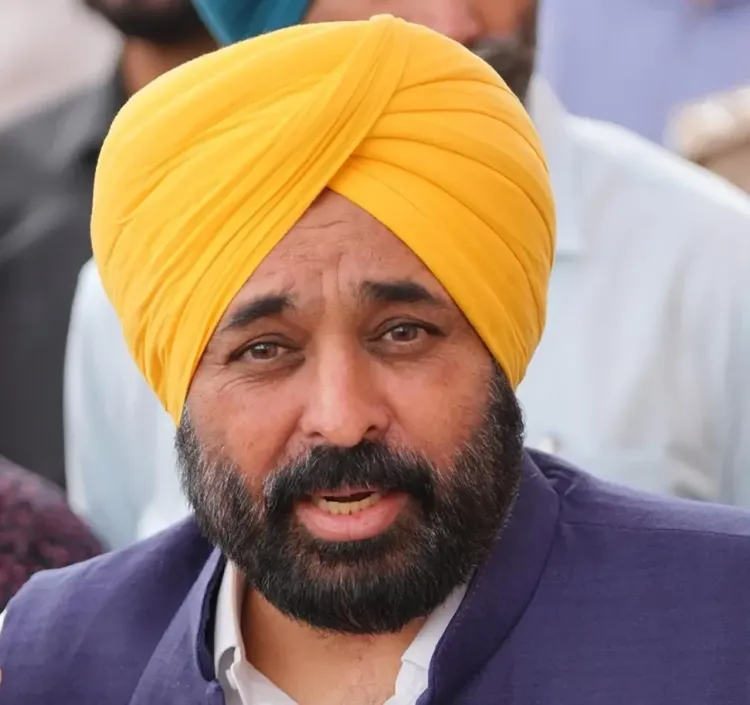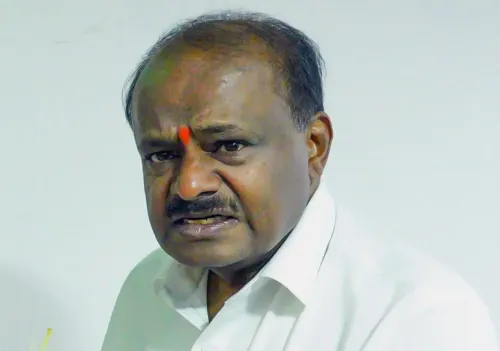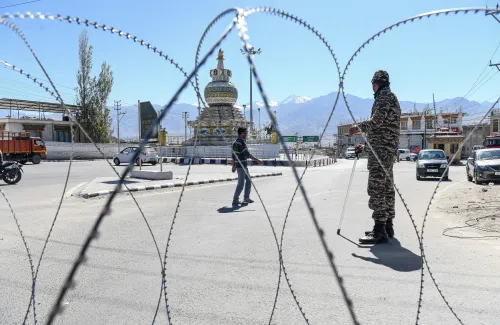Could Punjab's Proposal to Shelve the SYL Canal Issue Bring Resolution?

Synopsis
Key Takeaways
- Punjab's Chief Minister advocates for the use of Chenab river water to resolve the SYL canal dispute.
- The Indus Water Treaty suspension presents new opportunities for India.
- Utilizing Chenab's water could support Punjab's agriculture and reduce groundwater depletion.
- New canals and infrastructure would be essential for diverting Chenab's water.
- Collaboration among states is crucial for equitable water management.
New Delhi, Aug 5 (NationPress) As the critical Supreme Court hearing approaches, Punjab's Chief Minister Bhagwant Mann implored the Centre to utilize the Chenab river's water effectively to address the longstanding water conflict with Haryana by setting aside the Satluj Yamuna Link (SYL) canal matter.
During discussions at a meeting convened by Union Jal Shakti Minister C.R. Paatil, which included Haryana Chief Minister Nayab Singh Saini, Mann highlighted that the last meeting on July 9 revealed that the Indus Water Treaty with Pakistan had been suspended, presenting a significant opportunity for India to use water from the Chenab, one of the western rivers previously allocated to Pakistan.
Mann emphasized the need for the Centre to redirect Chenab's water to Indian reservoirs like Ranjit Sagar, Pong, or Bhakra, adding that new canals and infrastructure would be necessary, which would be constructed in Punjab.
The SYL canal has been a contentious issue between Punjab and Haryana since the 1980s. Following the meeting, Haryana's CM stated that the previous meeting on July 9 led to a “very positive discussion.”
“Progress was made again this time, and the dialogue was conducted in a constructive environment,” he mentioned.
Saini assured that a favorable response would be presented in the Supreme Court on August 13, expressing confidence in finding an amicable solution.
In response to another inquiry, the Chief Minister stated that the Indus Treaty “is a secondary concern, with Rajasthan also set to receive water.”
However, Mann contended that the canals and infrastructure should first cater to Punjab's needs, and only afterward could water be supplied to Haryana and Rajasthan through the same canal system.
He asserted that utilizing Chenab's water would lessen Punjab's reliance on groundwater, revitalize surface irrigation, support the agricultural community—essential to the state’s economy—and preserve groundwater for future generations.
CM Mann insisted that the current groundwater depletion crisis in Punjab necessitates that any future strategies regarding the usage, diversion, or allocation of river waters prioritize the state.
He appealed for the waters of the western rivers to be allocated to Punjab first, advocating for the construction of new storage dams upstream of the existing Bhakra and Pong dams in Himachal Pradesh to significantly improve the storage and management of western river waters.
In favor of shelving the SYL canal issue, the Chief Minister firmly stated that the Sarda Yamuna link for transferring surplus Sarda water to the Yamuna river and redirecting Chenab water to the Beas via the Rohtang tunnel should be pursued to eliminate the necessity for the SYL canal.
Mann urged for the long-planned Sharda-Yamuna Link project to be prioritized, ensuring surplus water is directed to the Yamuna at an appropriate location.
He noted that the additional water could meet Haryana's water requirements from the Ravi-Beas system while also addressing the increasing drinking water needs of Delhi and ensuring water availability for Rajasthan.
CM Mann concluded that the issue of constructing the SYL canal could be permanently set aside under these circumstances. He advocated for reviewing the Yamuna Satluj Link (YSL) canal agreement from May 12, 1994, regarding the allocation of Yamuna waters to Delhi, Uttar Pradesh, Himachal Pradesh, and Rajasthan, post-2025.
The Chief Minister emphasized that Punjab should be considered a partner state in the allocation of Yamuna waters, with 60% of the surplus waters of the Yamuna reserved for the state.









